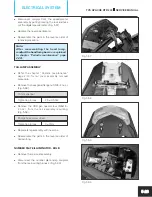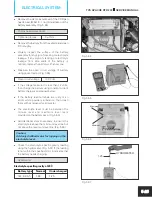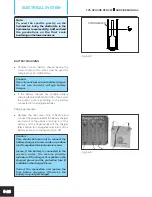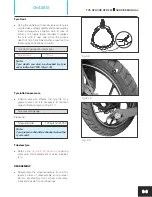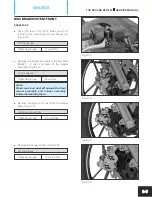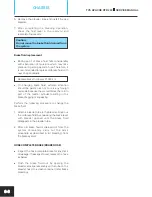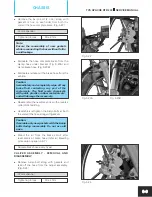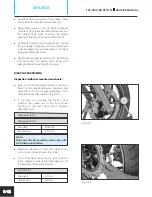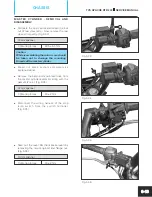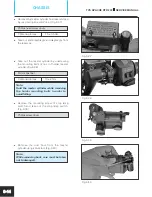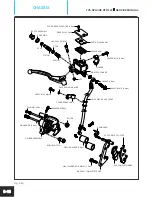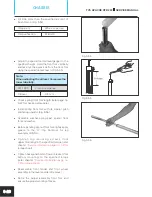
Fig. 6.20
Fig. 6.21
Caution:
Do not place the removed reservoir cap on
the speedometer or on any other painted
surfaces. Brake fluid will damage the
instrument cluster lenses and painted
parts.
Ensure no water enters the brake fluid
container. Because brake fluid has
hygroscopic property, and its boiling point
falls excessively if water is mixed with it.
Check the brake hose for cracks and hose
joints for leakage. If found any, replace the
hose.
Air bleeding from the brake system
l
If the front brake lever travel becomes more or
if any soft or spongy feel is observed in the
lever, you must carry out the air bleeding from
the brake system. Follow the procedure given
below for bleeding the air:
Note:
It is best, if two persons perform air
bleeding. Keep the fluid level in the
reservoir just above the ‘Lower level’ mark
during the bleeding procedure.
1. Dislocate the bleeder cap and attach a bleeder
tube to the bleeder screw as shown in figure
(Fig. 6.20). A transparent tube is useful in
finding air bubble expelled from the system.
The tube must be submerged in a clean
container partially filled with brake fluid.
2. Fill the reservoir with the brake fluid. Fix back
the reservoir cap to prevent a spout of brake
fluid and entry of dust.
3. Allow the pressure in the hydraulic system by
stroking the brake lever rapidly several times
and then hold the lever tight.
4. Unscrew (open) the bleeder by half a turn and
depress the lever all the way down. Do not
release the lever until the bleeder valve is
screwed in (tighten) again. (Fig. 6.21)
10 mm spanner
5. Repeat steps 5 and 6 until air bubbles
disappear from the bleeder tube or container.
Tighten the bleeder securely.
TVS APACHE RTR 200
SERVICE MANUAL
CHASSIS
6-7

